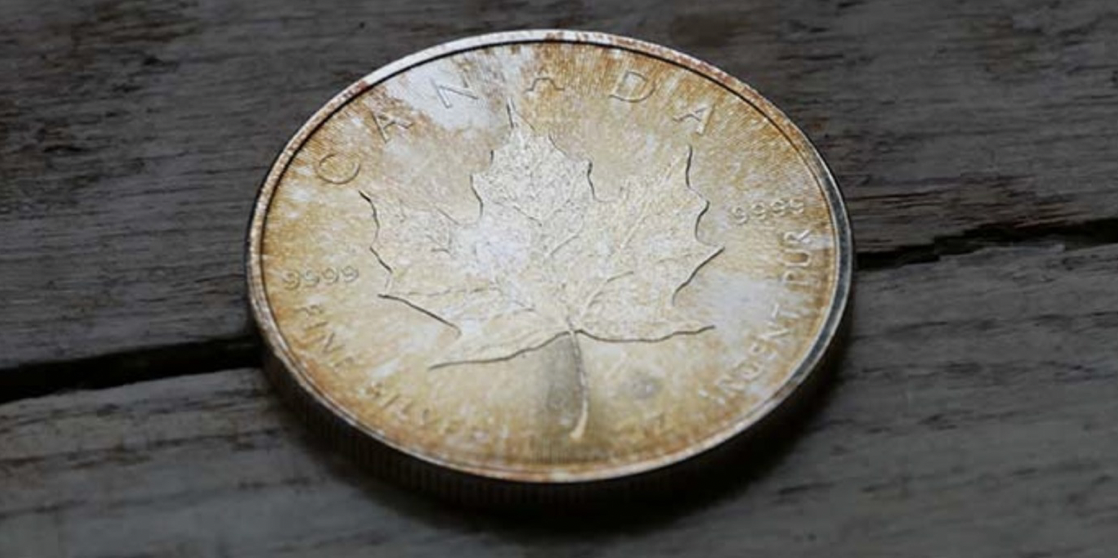A common question we get when selling silver bullion, especially the more dated bullion, is whether the yellow “thing” tarnishing the bar will affect the buy back price.
Let’s dissect this matter today. Over time, silver bullion can undergo a natural process known as oxidation, where it reacts with oxygen in the air and develops a tarnished or discoloured appearance. This raises an important question: Does the natural oxidation of silver bullion affect its buy back prices at bullion stores?
Before we get into that, let’s first understand what exactly is oxidation. Oxidation is a chemical process that occurs when silver reacts with oxygen, resulting in the formation of silver oxide on the surface. This oxide layer gives the bullion a tarnished appearance, ranging from a slight yellowish tint to a darker patina. It is important to note that this oxidation process is a natural occurrence and does not indicate any damage to the underlying silver content.
What factors actually affect buy back prices?
Well when it comes to the buy back prices of oxidised silver bullion at bullion stores, several factors come into play. Here are the key considerations:
- Purity of the Silver: The primary determinant of a silver bullion’s value is its silver content. Regardless of its tarnished appearance, bullion stores assess the purity of the silver to determine its buy back price. The higher the silver content, the higher the value.
- Market Demand: The demand for silver bullion plays a significant role in determining its buy back price. If the market demand is strong, bullion stores may be willing to pay a premium for even slightly oxidised bullion due to the high demand for silver as a precious metal. Vice versa, if there is strong supply of the metal, bullion stores may buy back at a slight discount even if the bullion is not tarnished.
- Rarity and Collectability: Some collectors and investors seek out rare or unique silver bullion pieces, including those with patina or tarnish. Such pieces may have added value beyond their intrinsic silver content. In these cases, bullion stores may consider factors such as historical significance, limited mintage, or unique designs when determining buy back prices.
- Bullion Store Policies: Each bullion store may have its own policies and criteria for assessing and valuing oxidised silver bullion. It is advisable to check with specific stores to understand their policies regarding tarnished or discoloured bullion.
So while the natural oxidation of silver bullion may affect its appearance, it generally does not significantly impact buy back prices at bullion stores. The key factors influencing the buy back price are the silver content, market demand, and any additional collectability factors. However, it is important to note that each bullion store may have its own policies, so it is recommended to consult with them directly for their specific valuation methods.
Investors and collectors should also consider that silver bullion is often purchased for its long-term value rather than its immediate resale potential. As with any investment, it is wise to do thorough research, understand market dynamics, and make informed decisions to maximize returns on silver bullion investments.
#silvertarnish #silver
